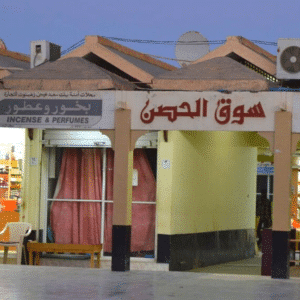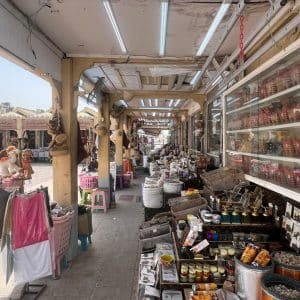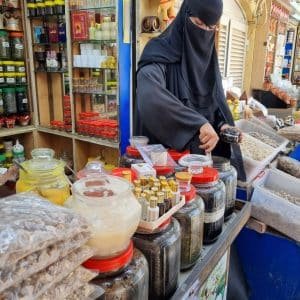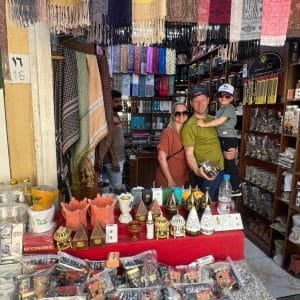Al Husn Souk at Haffa: 13 Magical Reasons to Explore Salalah’s Most Aromatic Market

Welcome to the sensory-rich world of Al Husn Souk at Haffa, where tradition, scent, and craftsmanship intertwine. Nestled beside the Sultan’s summer palace and near the shimmering coastline of Salalah, this souk is a living echo of Oman’s storied incense trade. Whether you’re chasing authentic frankincense, traditional perfumes, or cultural treasures, this market promises an experience unlike any other.
Al Husn Souk at Haffa
Located in Salalah’s historic Haffa district, Al Husn Souk at Haffa is also affectionately known as the Frankincense Souk. For centuries, it has served as a bustling marketplace where traders, travelers, and locals exchange not just goods, but stories, traditions, and smiles. A visit here takes you into the heart of Dhofar’s ancient trading culture—rich with history, fragrance, and handmade art.
Location and Historical Significance
Strategically situated along Sultan Qaboos Street and flanked by palm trees and traditional architecture, the souk’s proximity to the Sultan’s Al Husn Palace and Haffa Beach gives it both prestige and charm. This market has been around for generations, thriving during Oman’s days as a global supplier of frankincense. Its name, Al Husn, literally translates to “fortress,” evoking its timeworn role as a stronghold of culture and commerce.
Al Husn Souk at Haffa: The Frankincense Capital of Oman
The soul of this market? Frankincense—pure, aromatic, and world-famous. This tree resin, harvested in the mountains of Dhofar, fills the souk with a mystical fragrance. Merchants proudly display Royal Hojari and other premium grades, offering chunks of resin, essential oils, incense burners, and even medicinal blends.
Don’t be shy—vendors often invite visitors to sample and sniff. You’ll learn the difference between green, amber, and brown varieties, each with its own scent profile and use.
Traditional Products You Can’t Miss
At Al Husn Souk at Haffa, you’ll find:
Bukhoor burners and handmade incense vessels
Silver jewelry with ancient Omani patterns
Locally blended perfumes and oud
Spices and traditional teas
Textiles, pashmina scarves, and abayas
Hand-carved souvenirs
Each stall is a miniature museum of Salalah’s craft heritage.
Architecture and Atmosphere
The souk maintains its old-world charm. With mud-colored walls, open alleys, and shaded passageways, it’s perfect for slow walks and casual discoveries. Wooden doors creak with character, and every scent trail leads you to another corner worth exploring.
Evening Magic: When the Souk Comes Alive
The best time to experience Al Husn Souk at Haffa is after 4 PM. The cooler temperatures bring locals out in waves. Lanterns flicker to life, and the air becomes thick with scent trails of oud, myrrh, and frankincense. You’ll hear Omani music from radios, laughter between vendors, and the occasional hum of a passing breeze.
Tips for First-Time Visitors
| Tip | Benefit |
|---|---|
| Visit after 4 PM | Cooler, livelier, and more shops open |
| Bring cash | Some shops are cash-only |
| Ask before photographing | Courtesy is appreciated |
| Learn the grades of frankincense | Enhances your buying experience |
| Bargain respectfully | It’s part of the tradition |
Cultural Significance of Al Husn Souk at Haffa
This souk is more than just a market—it’s an institution. For locals, it’s a weekly routine. For tourists, it’s a cultural immersion. Frankincense has religious, medicinal, and cultural value. It’s been used in ancient rituals, Catholic churches, and Ayurvedic healing. When you buy it here, you’re buying a piece of history.
Healing Through Incense: Wellness in the Souk
Many Omani families still use frankincense for wellness. Ask the vendors about traditional methods:
Boiling resin for chest ailments
Burning for purification
Infusing water for digestion
They’ll gladly share age-old secrets with anyone willing to learn.
Nearby Attractions You Can Combine with Your Visit
Haffa Beach: Walk 2 minutes and dip your toes in the Arabian Sea.
Al Husn Palace: Glimpse royal architecture next door.
Al Baleed Archaeological Park: Museum and ruins just 10 minutes away.
Local coconut stalls: Fresh juice and fruit carts line the nearby streets.
Perfect for Tourists and Locals Alike
Tourists often remark on the souk’s authenticity—this isn’t a tourist trap. Locals shop here too. It’s this blend that keeps the experience grounded and sincere. Whether you’re buying or browsing, you’re welcome.
Sustainable Shopping at Al Husn Souk at Haffa
Supporting small vendors helps preserve local trade. Most items are made or assembled locally, minimizing environmental impact. Plus, they last—true craftsmanship always does.
FAQs
What are Al Husn Souk at Haffa opening hours?
Typically open from 9 AM–12 PM and 4 PM–10 PM.
Is the market suitable for children?
Yes! It’s family-friendly, with vendors often giving children small gifts.
Do all shops accept cards?
Not all. It’s best to carry Omani Rials in cash.
Can I buy genuine frankincense here?
Yes, and you can compare grades with the vendor’s help.
Is it close to the beach?
Yes, just steps from Haffa Beach—a perfect post-shopping break.
Are tours available?
Some hotels and guides offer walking tours with cultural narration.
Conclusion
From its rich aromas to its heartfelt hospitality, Al Husn Souk at Haffa is a highlight of Salalah. Here, every scent tells a story. Every alley holds a secret. And every visitor walks away with something intangible—a deeper connection to Oman’s legacy. If you only have time for one cultural stop in Salalah, make it this souk. It’s more than a market—it’s a memory.
Suggested funy:







Comment (0)